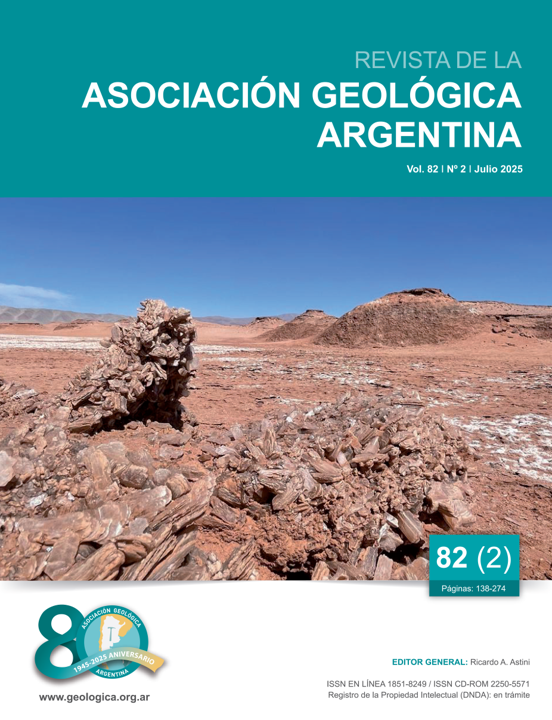Structural anatomy and deformation phases of the Silva Range, San Bernardo fold belt (Golfo San Jorge Basin, Argentine Patagonia). Structural Geology of Silva range
Main Article Content
Abstract
The Golfo San Jorge Basin (Argentina) plays a leading role in the construction of structural models for extra-Andean Central Patagonia. Notably, the Silva range represents a paradigmatic positive tectonic inversion fold, which reveals the complex tectonic evolution
of this region. Its tectonostratigraphic architecture in both the forelimb and backlimb defines a pre-inversion succession for the Castillo Formation (Albian). Furthermore, the deposits of the Bajo Barreal Formation substantiate a Late Cretaceous (post-Coniacian) extensional phase. This phase generated secondary sedimentary cover faults, oriented obliquely to transversely, relative to the main NNE-trending Sierra Silva basement fault. This three-dimensional distribution of normal faults conditioned the positive tectonic inversion that gave rise to the current morphostructure. Here, the shortening combines along-strike variations in the degree of inversion with partitioned deformation. The northern extremity of the Silva range is delineated by the NW-trending Cerro Chenques fault. This fault exhibits oblique inversion, characterized by inhomogeneous sinistral lateral displacement and localized compression, which respond to the inherited fabric and an antidilational curvature. The results of this study improve the understanding of the phases and dynamics of Cretaceous-Cenozoic deformation in the Patagonian broken foreland. From an applied perspective, the Silva range can be used
as a structural analogue for comprehending hydrocarbon traps within the San Bernardo fold belt. The anatomical and evolutionary complexity of the Silva Range makes it a globally significant reference case for oblique positive tectonic inversion.
Article Details

This work is licensed under a Creative Commons Attribution-NonCommercial 4.0 International License.
Nota de copyright
Los autores conservan los derechos de autor y garantizan a la revista el derecho de ser la primera publicación del trabajo licenciado según una licencia de atribución Creative Commons que permite a otros compartir el trabajo con el reconocimiento de la autoría y de la publicación en la que se publicó por primera vez.
Declaración de privacidad
Los nombres y direcciones de correo electrónico introducidos en esta revista se usarán exclusivamente para los fines declarados por esta revista y no estarán disponibles para ningún otro propósito u otra persona.

